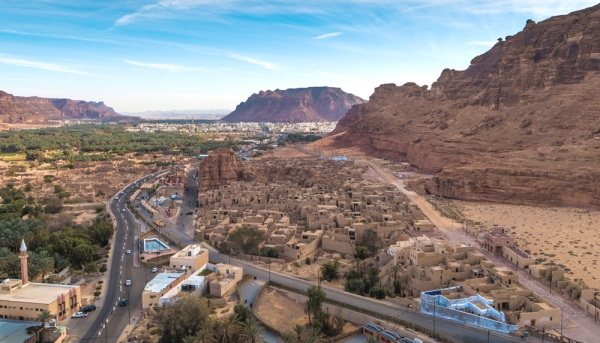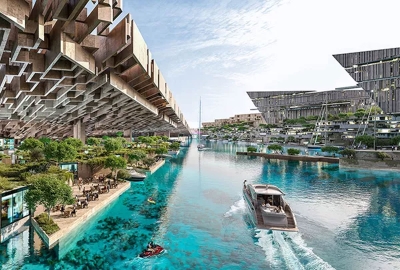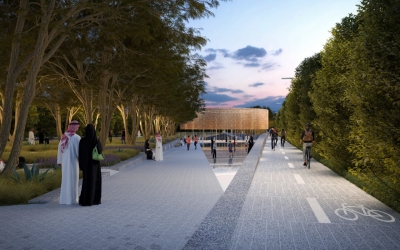

The Development of Historic Regions in the Kingdom of Saudi Arabia is one of the Kingdom's key priorities, focusing on historic regions that encompass cultural and civilizational landmarks. This initiative follows a strategy that incorporates global systems and practices for protecting, restoring, and managing historic areas and their artifacts. The objective is to introduce these regions and highlight the Kingdom's cultural and historical depth.
Programs for developing historic regions in Saudi Arabia
The Custodian of the Two Holy Mosques Program for the Care of the Kingdom’s Cultural Heritage is one of the Kingdom’s initiatives for developing historic regions. It aims to rehabilitate, develop, and protect these areas while raising awareness and knowledge about the Kingdom’s history and heritage, and embedding them in the collective memory of Saudi citizens.
The program works to educate people about the Kingdom’s history and the epics of its founding. It also focuses on rehabilitating and operating the historical palaces of the Kingdom from the era of Founding King Abdulaziz Bin Abdulrahman Al Saud, transforming them into cultural centers. Additionally, the program aims to protect archaeological artifacts, recover those taken abroad, and display them both locally and internationally.
The program also focuses on developing historical city centers and traditional markets, establishing and enhancing museums and their operations, and preserving architectural heritage buildings across various cities and regions in the Kingdom.
Among the program's tracks is the care for Islamic historical sites, which includes documenting these locations, rehabilitating wells and water sources linked to the Prophet’s biography, restoring the route of the Prophet’s migration, registering Islamic historical sites in the national registry, and preparing sites historically associated with the beginnings of Islam in Makkah al-Mukarramah and al-Madinah al-Munawwarah. These include the sites of the Battles of Badr, Ahad, and al-Khandaq, as well as the locations of Hudaybiyah, Quba Fortress, the Mosque of Allegiance, and the Palaces of Urwah.
Development of Historic Diriyah
Diriyah region is one of the historical sites that the Kingdom has worked on developing, as it represents a pivotal point in the Kingdom's history. It served as the capital of the First Saudi State and played a significant political role by laying the foundations of the state since its inception before its urban structure declined in the early nineteenth century.
The development of Diriyah, located within Riyadh Province, aims to preserve its urban fabric and repurpose it using modern methods. Additionally, it seeks to incorporate elements of culture and foster economic and social development in the region, while also promoting tourism and creating a cultural space that serves both the local community and visitors. The Diriyah Gate Development Authority is dedicated to highlighting the region's rich history and offering numerous heritage-inspired and inspiring experiences throughout its area.
The development of the historic al-Ula region
Al-Ula region, located north of al-Madinah al-Munawwarah, is one of the Kingdom’s historic destinations, renowned for offering a globally unique tourism experience. A dedicated royal commission oversees its development, positioning it as one of the Kingdom’s premier historical areas. It features archaeological and historical landmarks that date back over two hundred thousand years, including Hijr City, the first Saudi site to be inscribed on the United Nations Educational, Scientific, and Cultural Organization's (UNESCO) World Heritage List in 2008.
Jeddah Historic District Program
Historic Jeddah is a globally recognized cultural heritage site and a central archaeological, commercial, and tourism area in the heart of Jeddah City. It encompasses approximately six hundred heritage buildings, the oldest of which date back to the seventh century.
The Council of Ministers approved the transformation of the management of the Historic Jeddah Project into a program aimed at its rehabilitation and development across urban, economic, social, cultural, historical, and environmental fields, as well as providing its public facilities and service needs, on April 14, 2020. On July 16, 2024, the council approved extending the program for an additional two years, with its implementation overseen by the Ministry of Culture.
The Kingdom is working on developing several historic regions in Makkah al-Mukarramah and al-Madinah al-Munawwarah through the Royal Commission for Makkah City and Holy Sites, as well as al-Madinah al-Munawwarah Region Development Authority. Additionally, municipalities and various development authorities are dedicated to revitalizing and preserving historical sites across different regions of the Kingdom.
Development of historic mosques in Saudi Arabia
The Kingdom has worked on developing historic mosques across all provinces and cities through the Mohammed Bin Salman Project for the Development of Historic Mosques. The project included the restoration and rehabilitation of 130 mosques throughout the Kingdom. The first phase was completed with the development of thirty mosques, executed by specialized companies in the construction and maintenance of heritage buildings while preserving architectural identity.
Related quizzes
Related articles

